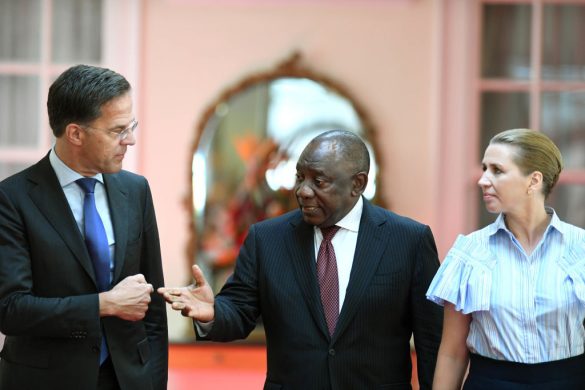Foreløbig er dog kun en enkelt lejr nedlagt under kaotiske omstændigheder – lokale myndigheder anklager fordrevne i lejrene for at være bevæbnede og optræde som banditter og røvere. Tragedierne i den østlige del af kæmpelandet fortsætter.
KINSHASA, 18 December 2014 (IRIN): The authorities in North Kivu Province in the eastern part of DR Congo hope soon to close the 60-odd camps housing some 210,000 internally displaced persons (IDPs = fordrevne) on its territory: They say peace has returned.
Whether the timing is right is debatable. Dozens of local and foreign armed groups are active in North Kivu, and in Beni Territory in the far north of the province there have been a series of brutal killings that have left over 250 dead since October.
After the defeat of the Tutsi-Congolese M23 rebels by the army and UN peacekeepers in November 2013, the governor of North Kivu, Julien Paluku, said camps for displaced persons should be closed, but so far only one camp has been closed – in somewhat chaotic circumstances.
“We found several weapons”
On a visit to Kiwanja, a town in Rutshuru Territory, on 2 December, Paluku announced that the camp there, which had about 2,300 people, was closing following a decision by the provincial cabinet.
“We found several weapons… It was a place where crime was developed… We found 10 weapons in three months,” said Paluku, adding that humanitarian workers had not been consulted on the closure.
Michel Magenda, mayor of Kiwanja, says there were “cases of banditry reported in this camp”, with residents “caught after committing crimes” and that a man was even “lynched by people in surrounding communities when he was caught looting (plyndre)”.
John, a resident of Kiwanja, said “bandits were hiding in the camp and had come to loot.” The confusion caused tension between the local population and the displaced people.
How the camp came into being
The camp, about 60 km north of Goma, capital of North Kivu, was set up in November 2008 following fighting between the National Congress for the Defence of the People (CNDP – a precursor of the M23) and the army, says the UN Refugee Agency (UNHCR).
It had 10,000 inhabitants who had fled fighting between CNDP and the Congolese army (FARDC).
“Towards the end of 2009, with an improved security situation in the wake of military operations… a wave of displaced opted to return [to their homes],” said Celine Schmitt, spokesperson for UNHCR in DR Congo.
These operations targeted the Democratic Forces for the Liberation of Rwanda (FDLR – mainly of Rwandan Hutu rebels, including leaders who had participated in the genocide of Tutsis in Rwanda in 1994).
FDLR has been given until 2 January 2015 to disarm or face an offensive by the army and UN peacekeepers – se også telegrammet http://www.u-landsnyt.dk/nyhed/16-12-14/fn-og-regeringsh-ren-klar-til-storoffensiv-i-stlig
The military operations against FDLR in 2009 and 2010 caused its members to scatter, allowing some displaced to return to their villages. About 1,000 people remained in the camp, mostly from the Binza group and villages near Virunga National Park occupied by FDLR.
The attacks of 2011 and 2012 against the M23 led to fresh displacements towards Kiwanja.
“We then had 4,000 people in the camp. After the conflict with the M23, IDPs from the Jomba, Kinyandoni and other groups returned [to their homes],” said Schmitt.
Bogus (falske) residents
Læs videre på
http://www.irinnews.org/report/100953/chaotic-closure-of-a-north-kivu-idp-camp














